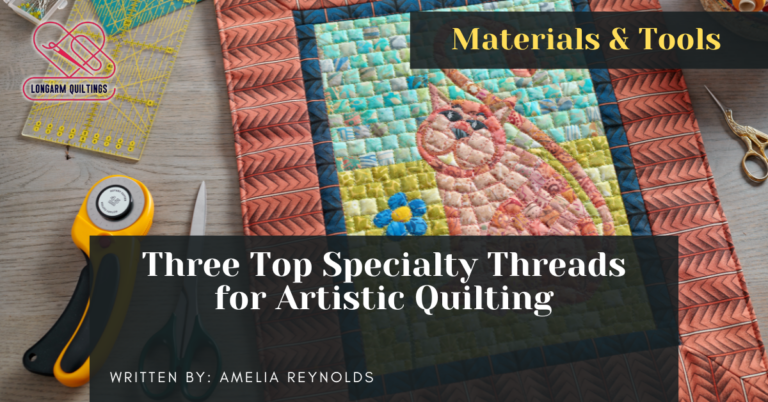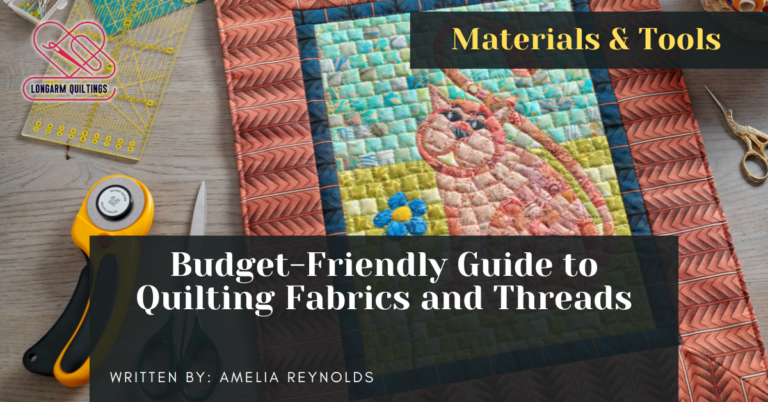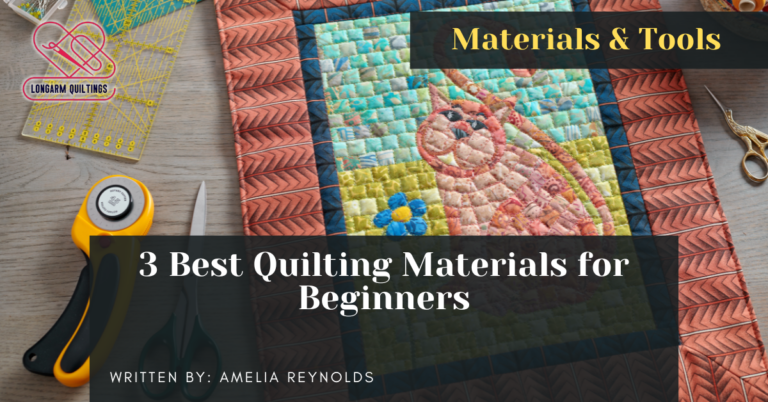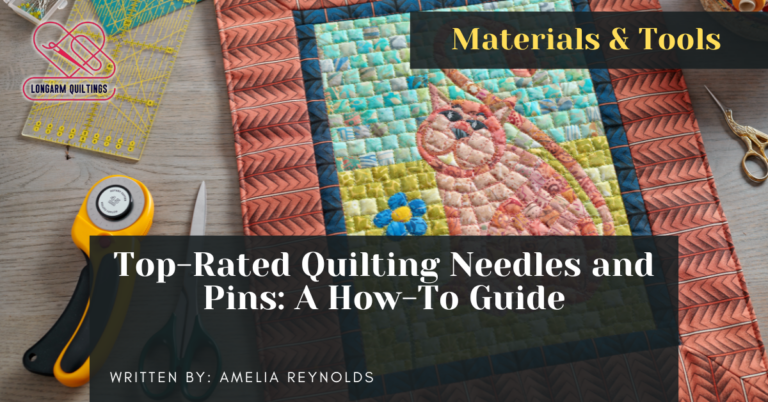When it comes to quilting, having durable cutting tools is essential for precision and efficiency in your craft. The market offers a variety of options, from rotary cutters to quilting scissors, each boasting its own set of strengths.
However, in the world of quilting, durability is key to ensuring longevity and consistent performance. So, which tools stand the test of time and heavy use? Let's explore the top contenders in the realm of quilting cutting tools and unravel the mystery behind their durability.
Rotary Cutters
Rotary cutters are essential tools for quilters, allowing for precise and efficient fabric cutting. The blade sharpness of a rotary cutter is crucial for achieving clean and accurate cuts. High-quality rotary cutters come with sharp blades that can easily slice through multiple layers of fabric, saving time and effort for quilters. Additionally, the ergonomics of a rotary cutter play a significant role in user comfort. A well-designed handle with ergonomic features reduces strain on the hand and wrist during prolonged use, enhancing the overall quilting experience.
Safety features are another important aspect to consider when choosing a rotary cutter. Many modern rotary cutters include safety mechanisms such as blade guards that retract when not in use, reducing the risk of accidental cuts. It is vital to select a rotary cutter that is compatible with various blade sizes to accommodate different cutting needs. Ensuring compatibility with replacement blades is essential for the longevity and versatility of the tool. By prioritizing blade sharpness, ergonomics, safety features, and compatibility, quilters can invest in a durable and efficient rotary cutter for their quilting projects.
Quilting Scissors
When it comes to quilting tools, a vital instrument that every quilter should have in their arsenal is a reliable pair of quilting scissors. Quilting scissors are designed specifically for cutting fabric with precision and ease. One essential feature to look for in quilting scissors is ergonomic handles. These handles are designed to provide comfort and reduce strain on the hands and wrists during long quilting sessions.
Quilting scissors are essential for tasks that require intricate cutting, such as trimming seam allowances, cutting out appliqué shapes, or snipping threads with accuracy. The sharp blades of quilting scissors ensure clean and precise cuts, allowing quilters to achieve professional-looking results in their projects.
Whether you are a beginner or an experienced quilter, having a high-quality pair of quilting scissors with ergonomic handles and sharp blades is a must-have tool for your quilting kit. The combination of ergonomic design and precision cutting makes quilting scissors an indispensable tool for quilters of all levels.
Acrylic Rulers
An important tool that complements quilting scissors in a quilter's toolkit is the precision and versatility offered by acrylic rulers. Acrylic rulers are essential for accurately measuring and cutting fabric in quilting projects. One of the key features of acrylic rulers is their precision marking, which allows quilters to make consistent and accurate cuts. The clear surface of acrylic rulers makes it easy to see fabric patterns underneath, ensuring that measurements are precise and cuts are made exactly where needed.
Another important aspect of acrylic rulers is their non-slip grip. This feature helps to keep the ruler steady on the fabric, reducing the risk of slippage and ensuring that cuts are straight and accurate. The non-slip grip also enhances safety by preventing accidents that can occur when rulers move unexpectedly during cutting.
Self-Healing Cutting Mats
Self-healing cutting mats are indispensable tools in the arsenal of quilters and crafters alike, providing a durable and resilient surface for cutting fabric with precision. These mats are designed to absorb the cuts made by rotary cutters or craft knives, effectively healing and closing the incisions, thus prolonging the mat's lifespan.
Here are some key points to consider when using and caring for self-healing cutting mats:
- Cutting Techniques: Proper cutting techniques are essential to maintain the longevity of self-healing cutting mats. It is crucial to use sharp blades to reduce the pressure applied to the mat, ensuring clean cuts without excessive force. Additionally, rotating the mat frequently while cutting helps distribute wear evenly, preventing premature wearing out in specific areas.
- Material Care: To preserve the self-healing properties of the mat, avoid exposing it to direct sunlight or extreme heat, as these can deteriorate the healing capabilities over time. It is advisable to store the mat flat or rolled up to prevent warping and maintain its flat surface for precise cutting. Regular cleaning with a mild soap and water solution can also help remove debris and maintain the mat's healing effectiveness.
Electric Rotary Cutters
Quilting enthusiasts seeking efficient and precise cutting tools may find Electric Rotary Cutters to be a convenient and effective option for their projects. These modern tools offer a cordless design, providing freedom of movement without the restriction of a cord. The cordless feature enhances maneuverability around large quilting projects, offering flexibility and convenience.
Electric Rotary Cutters are known for their cutting precision, ensuring clean and accurate cuts through various fabrics with ease. They are equipped with safety features such as blade guards to prevent accidents and injuries during use. Additionally, many models come with an ergonomic handle that reduces hand fatigue and provides a comfortable grip for extended cutting sessions.
Frequently Asked Questions
Are There Any Special Care Instructions for Maintaining the Durability of Quilting Cutting Tools?
To maintain the durability of quilting cutting tools, follow these care instructions: Clean tools regularly using mild soap and water, store in a dry place, oil blades periodically, avoid cutting abrasive materials, and always handle tools with care to prevent damage.
Can Quilting Cutting Tools Be Used on Different Types of Fabrics?
Quilting cutting tools can be used on various fabrics depending on the blade's sharpness and type. Consider fabric compatibility and cutting technique for optimal results. Blade longevity is influenced by material thickness and proper maintenance.
Are There Any Specific Safety Precautions to Keep in Mind When Using Quilting Cutting Tools?
When using quilting cutting tools, it is crucial to prioritize safety. Proper handling, storage, and maintenance are key. Always wear personal protective gear, such as gloves and eye protection. Keep blades sharp, store tools securely, and follow manufacturer guidelines.
How Often Should Quilting Cutting Tools Be Sharpened or Replaced?
Quilting cutting tools should be sharpened every 3-6 months depending on usage, ensuring precise cuts. Replacement timelines vary but generally occur every 1-2 years. Proper blade maintenance involves cleaning after each use, storing tools in a dry place, and keeping blades covered.
Are There Any Additional Accessories or Attachments That Can Enhance the Durability of Quilting Cutting Tools?
To enhance the durability of quilting cutting tools, consider blade sharpness maintenance, suitable storage techniques to prevent damage, ergonomic handles for comfort and reduced strain, and availability of replacement parts for easy repairs, ensuring longevity and optimal performance.
Conclusion
In conclusion, when it comes to quilting cutting tools, durability is key. Rotary cutters, quilting scissors, acrylic rulers, self-healing cutting mats, and electric rotary cutters are all excellent options for quilters looking for tools that will stand the test of time.
By investing in high-quality, durable tools, quilters can ensure that they have the necessary equipment to create beautiful and precise quilting projects for years to come.






